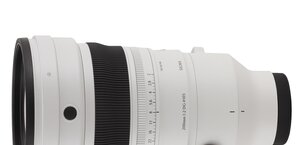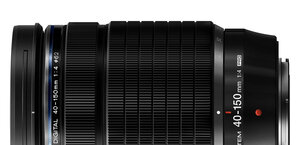Sigma 24-70 mm f/2.8 EX DG HSM
4. Image resolution
The MTF 50 values chart, depending on the aperture value, for the center of the Nikkon D200 frame, is presented below.
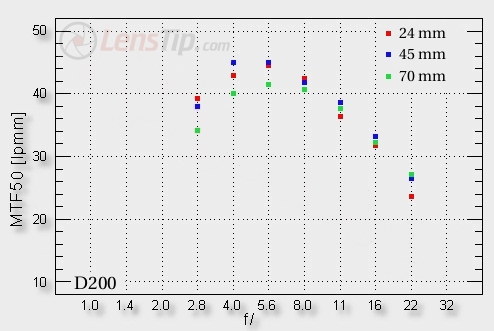
Please Support UsIf you enjoy our reviews and articles, and you want us to continue our work please, support our website by donating through PayPal. The funds are going to be used for paying our editorial team, renting servers, and equipping our testing studio; only that way we will be able to continue providing you interesting content for free. |
- - - - - - - - - - - - - - - - - - - - - - - - - - - - - - - - - - - - - - - - - - - - - - - -
Let’s start with the praises because the Sigma certainly deserves them. The maximum relative aperture is fully useful at all focal lengths and gives us images definitely sharp. The weakest results we get at 70 mm but even there the 34 lpmm value can be considered as good. The frame center picture quality is beyond reproach, especially that, on stopping down by one stop, we get a brilliant 40 lpmm level or better at every focal length! At shorter focal lengths by f/4 – f/5.6 the results are on the 44-45 lpmm level – even good “primes” would be proud of them.
Can we find any fault in the Sigma? Perhaps it’s not a fault but it’s worth notice that the Sigma is slightly worse than the Nikkor and the Zeiss. The second lens is a class of its own because the results of over 40 lpmm were optained even at maximum aperture. Nikkor was a tad worse than Zeiss but still better than Sigma. The Sigma was definitely better than the oldest of them all, the Canon 24-70 mm, for a change. Even if we take into account the fact, that the Canon was tested on a sensor the least densely packed with pixels, so we would have to increase its MTF 50 values by 10%, the results are still worse at all focal lengths. Do not forget that the Sigma is the cheapest, the smallest and the lightest lens of all compared here so it deserves a round of applause. Looking at the real images you can hardly notice any difference between this lens and the Nikkor or the Zeiss – if you do notice it, it will be only at maximum aperture.
The edge of the DX detector performance is presented in the following chart.
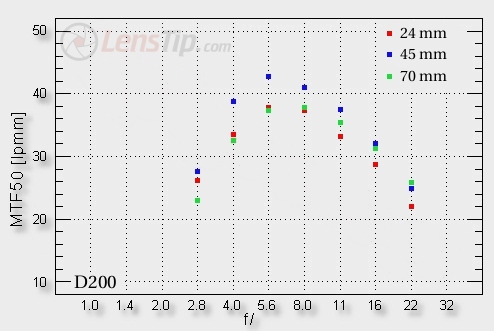
The maximum relative aperture performance is the only thing we can carp about because the 30 lpmm level hasn’t been reached at any of the tested focal lengths. We must immediately mention, though, that neither the Nikkor nor the Canon managed that trick. Only the Zeiss had no problems in crossing that border for the range of 24-45 mm and obtained a result of almost 34 lpmm. On stopping down to f/4.0, we get rid of all the problems. From that aperture value all the images, even in the corner of the DX sensor, are very sharp and for the middle focal range are even outstandingly so. Overall, the DX detector edge performance for Sigma is a bit better than Nikkor’s but still worse than Zeiss’s. Once again the Canon lags behind here – you have to stop it down by about 2 EV to get fully sharp edges.
It’s time to discuss the lens’s full frame performance on a Nikon D3x. The respective chart with frame center results is presented below.
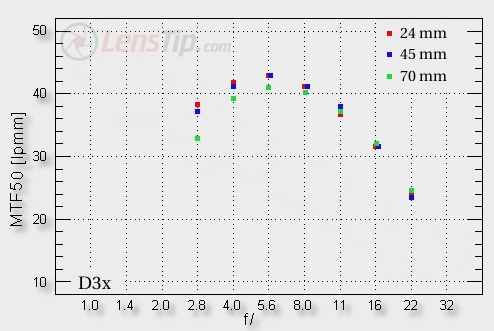
We shouldn’t be surprised that it reminds us of the same chart for a D200. Both bodies have approximately the same pixel density so the MTF50 values are also similar. We can practicallt insert here everything what was said for the D200 results.
Much more can say the chart showing the tested lens’s performance for the full frame detector edge, which we present below.
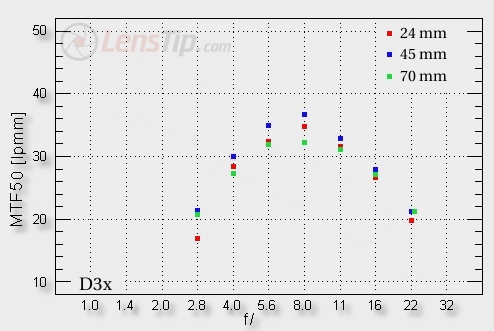
The MTF50 values are lower than for the DX sensor edge, no surprises here. The maximum relative aperture at all focal lengths cannot be called useful because the resolution on the level of 20 lpmm is hardly so. Fortunately, on stopping down by one stop we reach the 30 lpmm level, which we deem acceptable. In this category the Sigma shouldn’t be ashamed of its performance, showing a really outstanding quality/price ratio.
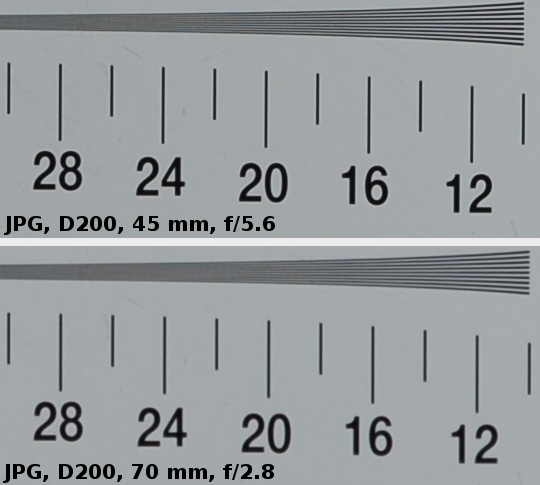 |




